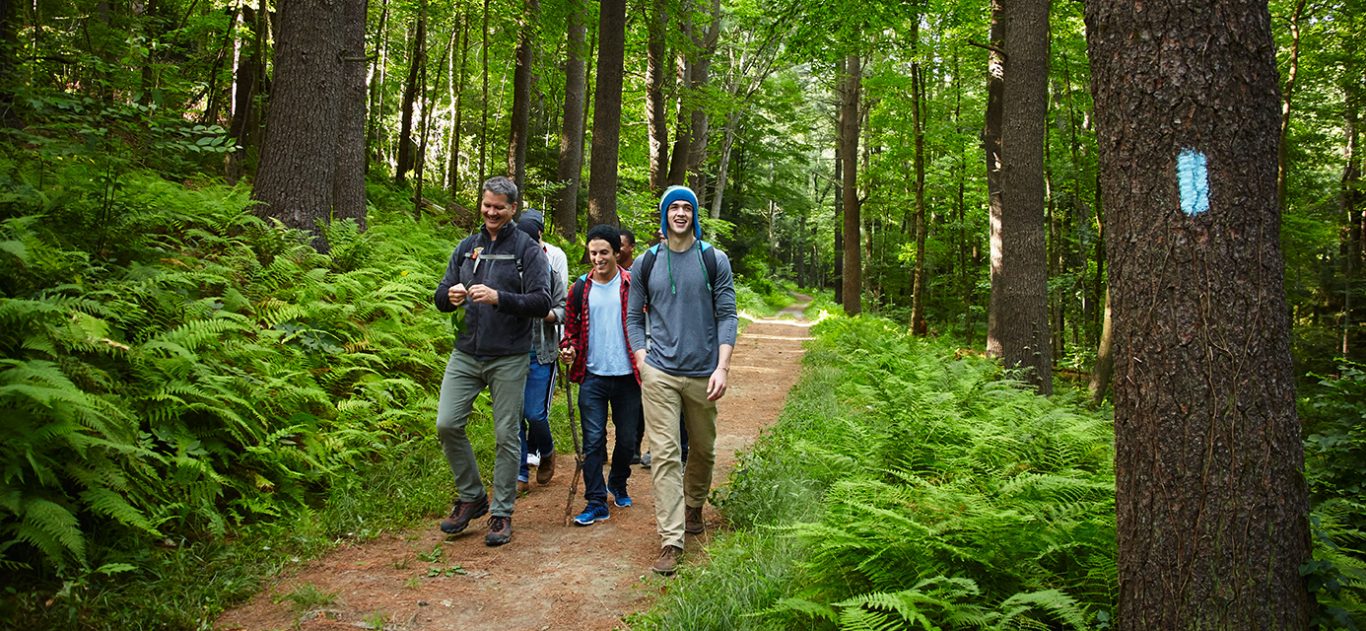The healing process can actually be fun. In fact, it can be an adventure!
First of all, the obvious fact is that Adventure Therapy gets kids outdoors in the beauty of nature. They learn life skills and build confidence. Furthermore, they gain resilience—a powerful tool—in exciting and challenging situations. Activities include cross-country skiing, ropes courses, rock climbing, paddle boarding, canoeing, kayaking, hiking, surfing, and more. Adventure Therapy teaches teamwork and empathy. In addition, teens learn to cooperate and find solutions. Therefore, this is very positive for teen mental health.
With Adventure Therapy, kids also get the much-needed opportunity to be outside in the fresh air, near woods and water. Scientists have found that spending time in nature stimulates the nervous system’s relaxation response. Consequently, this leads to a slew of positive effects.
Proven Benefits of Adventure Therapy
- Research shows that spending time outside reduces anxiety and depressive thoughts.
- Scientists at Stanford found that memory and cognitive function are improved by outdoor activity.
- Physical exercise improves mental health in adolescents.
- Unplugged time in nature helps regulate mood disturbance and nervous system arousal caused by too much time in front of screens.
- Studies show that nature activities reduce the symptoms of ADHD in children.
How Experiential Learning Works
Each time we’re presented with a problem and we use our mental and physical abilities to overcome it, we learn self-reliance. In addition, we move from a state of helplessness to a sense of empowerment. Adventure Therapy provides multiple opportunities for teens to find and implement solutions, individually and as a group. Therefore, this process builds their self-esteem and connection with others.
We’ve all experienced how nature can lift our spirits. When you’re outside in the fresh air, listening to the birds and noticing the breeze on your face, you feel better about your world and your life. These are moments of enjoyment and feeling comfortable in your own skin. Most of all, we are learning how to find joy in daily life. As a result, this is an important part of the recovery process.
A Powerful Component of Healing
Combined with clinical modalities, such as cognitive behavioral therapy, dialectical behavioral therapy, and EMDR, Adventure Therapy fosters sustainable growth and healing. This experiential modality is particularly helpful for teens that find traditional talk therapy difficult. In Adventure Therapy programs, they can fully immerse themselves in the experience without analyzing it. Afterward, trained therapists assist them in looking at what they experienced through the lens of their recovery process. When teens recognize the steps they’ve taken toward healing, they can apply them in every aspect of life. Especially relevant is the fact that teens are learning invaluable coping skills that can be applied to innumerable situations.
These activities offer a gateway into an adventure-based, active lifestyle. They bolster overall health and wellness and ignite lifelong recovery. As a result, kids struggling with teen depression, teen anxiety, or self-harm, learn self-love. This is a powerful lesson. Consequently, the impact of this therapy can be felt for years to come.
Find out more about Adventure Therapy at Newport Academy.If you or someone you love is in need of support, contact us. Our team is here to help. Learn more about Newport Academy’s treatment approach.
Sources:
Landscape and Urban Planning: Vol. 138, March 2015
Proceedings of the National Academy of Sciences, May 2015
International Journal of Exercise Science, Vol. 10, 2013
Psychology Today, August 2015
American Journal of Public Health: September 2004, Vol. 94, No. 9






